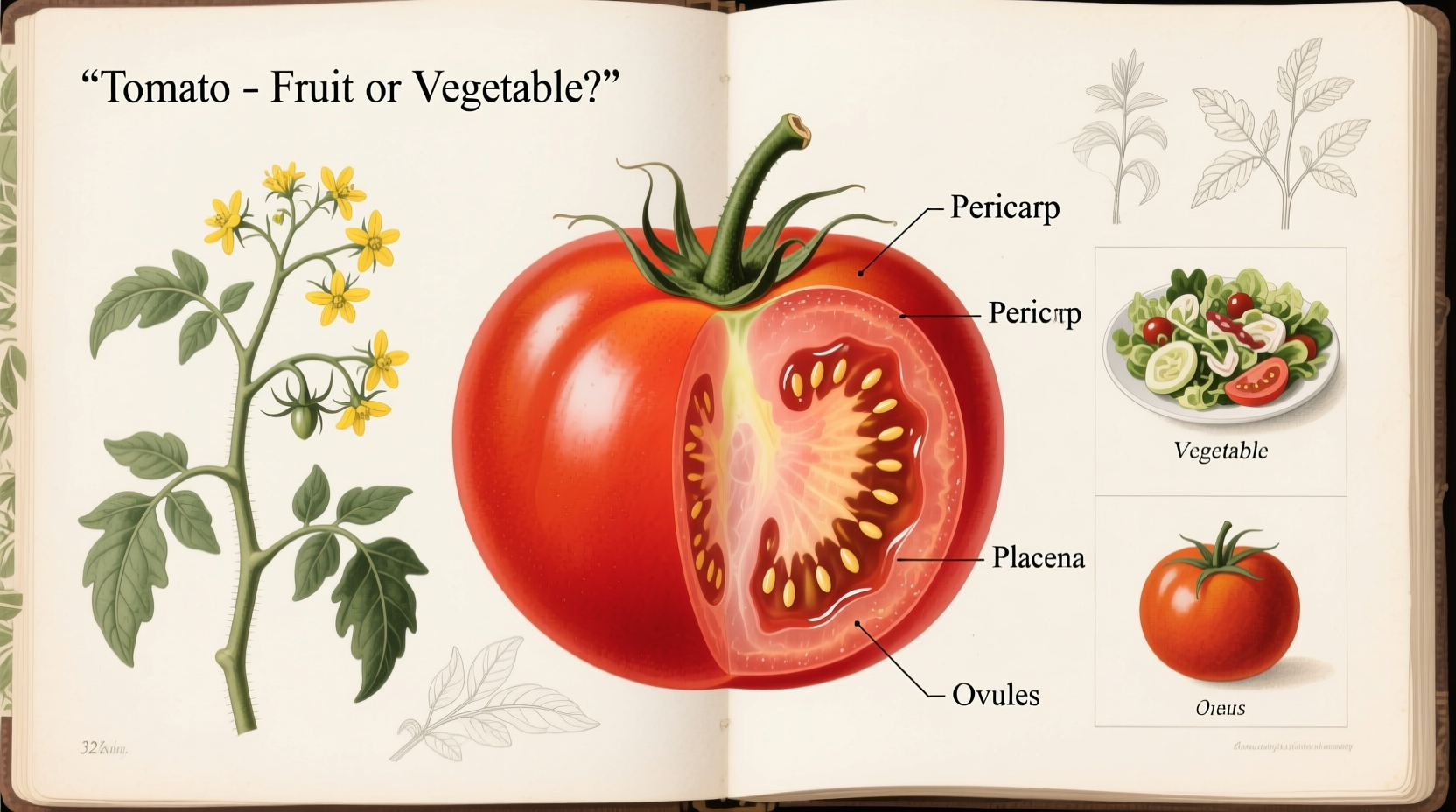Ever wondered why your salad includes tomatoes while your dessert doesn't? You're not alone. The tomato's identity crisis has confused home cooks, sparked Supreme Court cases, and created one of the most persistent food myths in culinary history. Understanding this classification isn't just academic—it directly impacts how you store, cook, and appreciate this versatile ingredient.
The Scientific Reality: Tomatoes as Fruits
From a botanical perspective, tomatoes unequivocally qualify as fruits. In plant biology, a fruit develops from the ovary of a flowering plant and contains seeds. Tomatoes form from the ripened ovary of the tomato flower and house numerous seeds—meeting the precise scientific definition of a berry (yes, tomatoes are berries!).
This botanical classification places tomatoes alongside cucumbers, peppers, eggplants, and squash—all technically fruits despite their savory profiles. The confusion arises because our culinary definitions prioritize flavor and usage over scientific accuracy.
| Characteristic | True Fruits | Botanical Fruits Treated as Vegetables |
|---|---|---|
| Development Origin | Flower ovary | Flower ovary (tomatoes, cucumbers) |
| Seed Content | Contains seeds | Contains seeds |
| Typical Flavor Profile | Sweet | Savory |
| Culinary Usage | Desserts, snacks | Main dishes, salads |
The Culinary Perspective: Why Chefs Treat Tomatoes as Vegetables
Chefs and home cooks worldwide treat tomatoes as vegetables because of their flavor profile and culinary applications. Unlike sweet fruits such as apples or berries, tomatoes offer a savory, acidic taste that complements main dishes rather than desserts. Their umami-rich profile makes them ideal for sauces, stews, and salads—preparing them like fruits would create culinary dissonance.
Professional kitchens follow usage patterns established over centuries. When tomatoes arrived in Europe from the Americas in the 16th century, they joined other nightshade plants in the "vegetable" category based on how they were prepared and consumed. This practical classification persists because it serves cooking purposes better than strict botanical accuracy.
The Legal Landmark: Nix v. Hedden (1893)
The tomato's classification debate reached the U.S. Supreme Court in 1893. In Nix v. Hedden, importers challenged a vegetable tariff applied to tomatoes, arguing they should be classified as fruits (which had lower tariffs). The Court unanimously ruled tomatoes should be considered vegetables for tariff purposes based on common usage.
Justice Horace Gray's decision stated: "Botanically speaking, tomatoes are the fruit of a vine, just as a cucumber, squash, and pea... But in the common language of the people... all these are vegetables which are grown in garden plots." This established the legal precedent that culinary usage, not scientific classification, determines food categorization in commerce.
While this ruling applied specifically to tariff classification, its influence extended to nutritional guidelines and food labeling. The USDA continues to classify tomatoes with vegetables in dietary recommendations, though modern nutrition science recognizes their fruit status while acknowledging their culinary role.
Practical Implications for Home Cooks
Understanding this dual identity helps you make better culinary decisions:
- Storage: Store tomatoes at room temperature away from direct sunlight. Refrigeration damages their flavor compounds—unlike most fruits, they don't continue ripening significantly after harvest.
- Cooking: Their acidity makes tomatoes ideal for balancing rich dishes. When roasting, their natural sugars caramelize beautifully—showcasing their fruit heritage.
- Pairing: Combine with classic vegetable companions like onions and garlic, but don't shy from fruit pairings—try tomatoes with watermelon or peaches for a refreshing summer salad.
- Gardening: As fruiting plants, tomatoes require similar care to other fruiting vegetables—consistent watering and support structures for their vining growth habit.

Global Classification Variations
The tomato classification debate isn't universal. In many countries, the distinction matters less than in the United States. The European Union classifies tomatoes as fruits for certain regulatory purposes while treating them as vegetables in culinary contexts. In botanical contexts worldwide, tomatoes remain firmly in the fruit category.
This variation reflects how food classification serves different purposes: scientific accuracy for researchers, practical usage for chefs, and regulatory consistency for governments. Recognizing these different frameworks helps navigate food discussions without getting stuck in false dichotomies.
Why This Matters Beyond Trivia
Understanding the tomato's dual identity reveals how language evolves to serve practical needs. Scientific accuracy matters in botany and nutrition science, while culinary terminology serves cooking functionality. Confusing these frameworks creates unnecessary debate—like arguing whether a spatula is a tool or kitchen equipment.
When selecting produce, focus on ripeness and flavor rather than classification debates. A perfectly ripe tomato delivers complex sugars (fruit characteristic) balanced with acidity (vegetable usage pattern)—this harmony makes it indispensable in global cuisines regardless of its technical category.











 浙公网安备
33010002000092号
浙公网安备
33010002000092号 浙B2-20120091-4
浙B2-20120091-4